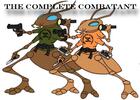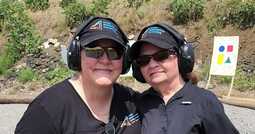

|
CLICK HERE:
AAR – Reactionary Zones By Claude Werner The Tactical Professor By tacticalprofessor on November 7, 2022#mindsetmonday I recently had the opportunity to attend REACTIONARY ZONES, a 3 Hour Online Session with Shelley Hill. This is an online class conducted via Zoom. This is my After Action Review of the class..................... |

|
|
Reactionary Zones
"I just took the online course Reactionary Zones with Shelley Hill and it was AWESOME!" Brandon Fisher of Precision Defensive Solutions "Thank you so very much for taking the time to do this video. I also appreciate your commitment to training and practice outside of the lethal options. OSS" Shelley |
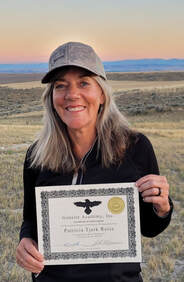
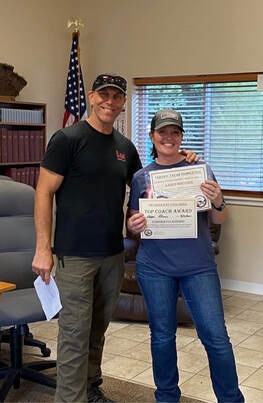
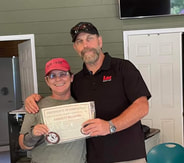
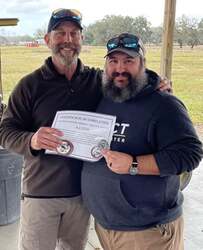

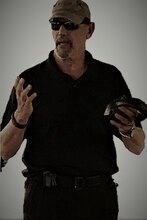
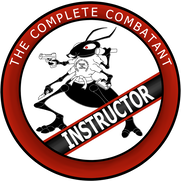
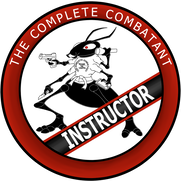
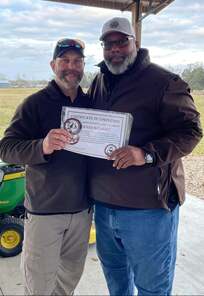
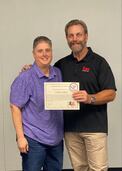
|
Rangemaster's Tac Con 2021
"Friday morning I attended a 3 hour live fire block taught by Brian Hill of the Complete Combatant................." Karl Rehn CLICK HERE for Part 2 of a 3 Series BLOG from Karl Rehn of KR Training. Since 1991, KR Training has been offering high quality, affordable firearms and self-defense courses. We're the oldest and largest firearms training school in Central Texas, staffed by male and female instructors with decades of combined experience and national level credentials in firearms training, defensive shooting and tactics, competition shooting, threat and risk assessment, law enforcement and military service. In addition to teaching our own courses, we host multiple national level trainers every year. |
|
ONLINE Reactionary Zones:
Turns out the old saying, “You’re never too old to learn” is true. I had the pleasure of sitting in on Shelley’s Reactionary Zones course last night and it was terrific. And what a learning experience it was. Shelley has the ability to take the mind to places it s never been before and stretches you to dig deep into your personal ‘tool box’ to ascertain, through experience and knowledge, to bring to the forefront the right decision for a variety of situations. This course is highly recommended for the young, old, male, female, everyone who wants to hone their safety-first skills. The lessons learned are applicable to so many life situations. I believe it can be useful in making a variety of wise and preplanned decisions. Marla L. of St. Louis |
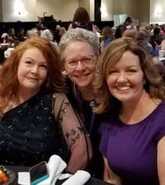
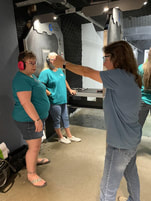
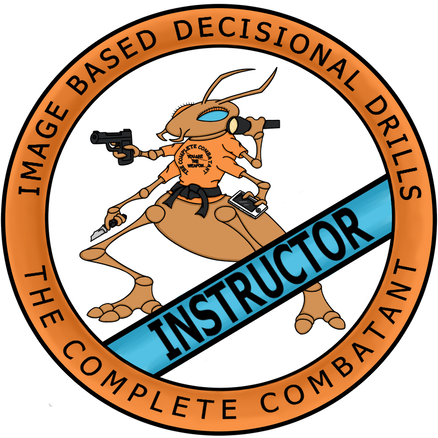
|
|
Reviews & ARR'sThank you very much to all who sat down to give us feedback in the form of video, letters, or social media posts. Most of The Complete Combatant's student base comes from YOU and you may not even know it. Your shares, invites, testimonials and word of mouth spreads like wildfire and we are still here because of YOU! THANK YOU!
TRIAD TRAINING:
Triad Training is the perfect blend of mindset, legal defense, proper law enforcement interaction, practical firearms handling, shooting skills and realistic hand to hand fighting. These are all of the skills a concealed carry permit holder should possess but often doesn’t. The training is delivered in a very efficient format over one and a half days. We all want to be responsible and capable concealed carry permit holders. This program is a great investment in improving critical skills that defenders at every skill level can benefit from. John Taylor Corporate Chief Risk Officer |
|
An ever increasing number of people feel the personal responsibility to protect themselves and their family from today’s violence. Many purchase a firearm and feel it is their best defense, and it’s mere possession is a talisman to ward off violence. Others will put in time and money to train with the defensive tools that they choose to carry for such an event. “Gun guys” train with guns, “knife guys” train with knives, and proponents of “empty hand” tactics train with the various “martial” methods. As a firearms enthusiast, instructor, and director of training at prominent firearms facility , I suppose I would traditionally fall into the “gun guy” category. However, I find myself with a practical approach to defense, focusing on technique/skill, and mindset, as opposed individual tools or “gear”. Being an instructor I feel reasonably confident that my shooting skills are sufficient for firearms based self-defense. However I don’t feel sufficiently skilled in other areas of defense, particularly physical and edged weapons. After passing 30, the physical attributes require more of my effort.
“The Complete Combatant” class by Brian Hill promised to be a scenario based, mixed method training using your own every day carry (EDC) items, and I jumped at the opportunity to take it. Shelley Hill provided me with clear and concise communication, ensuring that the required paperwork and gear checklist were accomplished prior to class. By my own preference, my typical EDC equipment is somewhat extensive. However, most of the items I carry (with a few minor exceptions) on a daily basis were able to be cleared for safe use in the class by the means of firearm disabler inserts, inert Blue guns, and training knives. I was particularly interested to see that students that did not regularly carry a knife were given a training knife anyways. This came into play later in the class, and would afford each student the ability to pick up a improvised knife or actual knife during the chaos of real attack, and effectively use it defensively. I am not deluded enough to think that as a male I was born with the ability to throw an effective punch. However with some coaching this was accomplished. Student are shown effective techniques to defend the head during an attack. Additionally knife grips and deployment were explored. We were then shown how to increase accuracy of our knife technique by utilizing the chain-link panels of the octagon. There was a definitive flow to the information we are receiving. Starting with standing shadowboxing and basic firearm draws, and progressing slowly to full body contact sparring with firearm retention and deployment. Brian has many years of MMA coaching, and it shows. Techniques were demonstrated thoroughly and then students paired up to practice the learned skill. Anytime a student struggled with a concept or technique due to gear placement, alternative placement and/or potential replacement of the offending equipment were explored. A particular area of personal deficit I discovered was getting off the ground. A seemingly simple task that in actual practice with some one actively trying (shoving, pushing, tripping, etc.) to keep you there, proved challenging. I have spent significant time learning how to fall safely, particularly with a firearm. However, Hill stresses the need to get up off the ground, because staying there will result in you receiving continued trauma (kicks, bunches, elbows, etc.) that will result in a knock out. Being unconscious is bad and completely indefensible. My 6′-3″ lanky frame and generally bad knees require more practice to be proficient. Other ground based methods were show shown non traditionally. “Shrimping” for example (walking with your shoulders and elbows) was demonstrated on a padded wall, to be able to get out of a corner or otherwise off the ground. Kneeing, kicking, and use of your feet to create distance was also discussed and demonstrated. Several large and heavy assistant coaches were on hand to assist and take you out of your comfort zone. Sparring with these individuals was initially intimidating, but bred confidence after working through scenarios. Hill explores the phenomenon of the “freeze”. When facing an heavy mounted attacker, one that is significantly larger that you, or a flurry of punches/kicks, one could find themselves in the “freeze”. A semi-protected defensive ball, or turning the face away, or giving up mid fight. I experienced a freeze during practice of the hip-bump used to dislodge a mounted attacker. A heavy assistant coach played the attacker in mounted position, and lacking the physical strength and stamina for an effective hip-bump, I found myself frustrated and tired. Hill saw it and shouted encouragement to not give up, as you are never out of the fight as long as your still conscious. Not a new concept for me, but in that moment Hill made a permanent impression I will not soon forget. A good deal of time was allocated to personal firearm retention as well as keeping your attackers firearm holstered. Methods were simple, practical, and not solely dependent on physical strength, something myself and the two women in the class appreciated. This methodology led to much adaptability and crossover from gun to knife, improvised impact devices, retention, and back again. In fact the fallacy of “simply” drawing a firearm and shooting your attacker was thoroughly exposed. Each student and myself died many “glorious” deaths during paired scenarios that forced us to work inside the clench, face multiple attackers, deal with bystanders, and maintain vigilant awareness. Dealing with the immediate threat, did not always end scenarios, Hill made sure of that by playing mixed roles of “hysterical bystander”, “concerned citizen”, “cellphone videographer”, “friend of the attacker” or mixing things up by snatching your firearm. Over zealous trigger fingers were kept in check by threats sometimes giving up and complying. This scenario based training method alone is well worth the class fee. Interestingly, many students experienced equipment failures of some kind. Hill sees the need to stress test your gear. Belts failed, holsters dumped guns, holsters stayed on guns, pockets dispensed their contents, firearm safeties stayed on, and ironically several shoes were lost. Although many of my own EDC items have already been vetted by prior classes, I did make a change to the location of my knife. A physically intensive day of training, band-aids were handed out for superficial cuts and scratches that appeared out of nowhere. After being notified that they were leaking, students could not tell you how they were scratched or when. In an era of litigation happy customers, it is refreshing to see the class not watered down for additional liability cushion. Everyone was sweating and tired by class end having put in good work, a testament to Hill’s focus on simulating the chaos of combat in a controlled and safe environment. I never felt uneasy about anything Hill asked us to do or feared injury, though I did not escape unscathed. Hill and his team set a precedent early one by ensuring cleanliness (our street shoes were disinfected) and safety by inquiring about prior injuries, physical disorders, or weak joints. Having attended countless classes and received much continual training over the years I am not easily impressed. However Hill’s delivery was palatable, methodology practical, and his experience credible. The whole team at The Complete Combatant created a family/tribe atmosphere that is contagious. If you are interested in learning the skills and mindset needed to survive the chaos of extreme close quarters combat and develop a game plan tailored to your skills and your everyday carry, this course is for you. Jonathan of Stoddards Atlanta |
Special Thank You to Lindsey Stephens for taking these FANTASTIC photos!
|
What an awesome class! Thank you to everyone involved in putting together such a thought provoking and mentally and physically challenging 1.5 days. The techniques that were taught, topics and scenarios that were presented, and the following conversation and discussion have provided me, an ordinary citizen without any formal military, hand-to-hand combat, or self defense training background, a sense of confidence and a strong mindset that I can better handle the unfortunate situation of being attacked should it ever occur. The class gave me and the other members an excellent opportunity to not only learn the techniques and skills but to also test our ability to defend ourselves and protect loved ones using real-world scenarios. This occurred in a controlled environment where mistakes would not end up in a tragic situation becoming a deadly event.
Brian and the other instructors presented the course material in such a way that we began with basic firearm draws and aiming, learning how to use a flashlight in conjunction with a firearm, and how to defend ourselves against a surprise attacker where protection of ourselves AND our firearm was a primary concern. The instruction also included how to secure an attacker at gunpoint, call the proper authorities for help, and how to handle the event once the police showed up and began the interviewing process. During the course, every student learned that simply drawing a firearm and shooting an attacker is not as easy as Hollywood and the television make it seem and that there is MUCH more to defending yourself and your family than just carrying a firearm or other weapon. Many students encountered situations that exposed weaknesses in their abilities and mindset, training and equipment, and the classroom environment allowed these mistakes and equipment failures to occur without incident or the loss of life. Discussion was had about how corrections could be made, why certain types of equipment were more prone to failure than others, which types of equipment were better than others, and we were presented with resources and options of how and where to continue training for more practice and even better mastery of the skills. Thank you and I look forward to ding this again! Daniel of Marietta |
